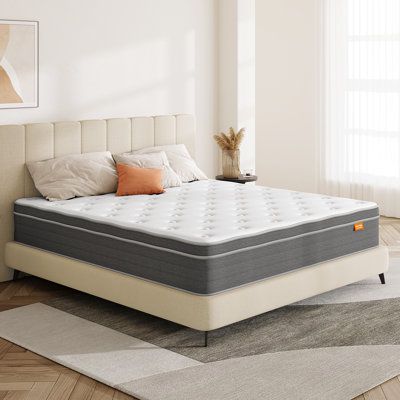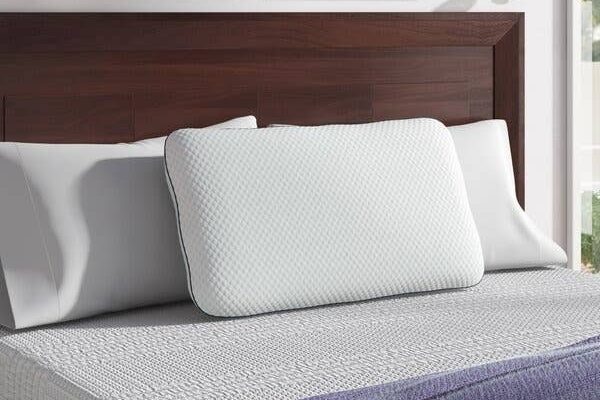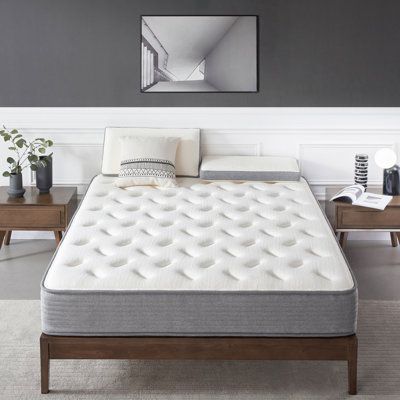Hybrid Mattress vs Memory Foam: Understanding the Differences to Choose What’s Best for You

When it comes to getting a good night’s sleep, choosing the right mattress is crucial. Two popular options in the mattress world today are hybrid and memory foam mattresses—each has unique advantages that cater to different sleeping preferences. If you’re on the fence about which mattress to pick, here’s a breakdown of their differences and some tips on how to choose the best option for you.
Hybrid Mattresses: The Best of Both Worlds
Hybrid mattresses are designed to offer a blend of support and comfort by combining multiple layers of different materials. The core of a hybrid mattress is often composed of pocketed coils, which provide a responsive and supportive base. Above the coil layer, there’s usually a combination of foam layers, which may include memory foam, polyfoam, latex, or even gel-infused foams. This structure offers a balance between the contouring comfort of foam and the sturdy feel of traditional spring mattresses.
Advantages of Hybrid Mattresses:
– Responsive Support: The pocketed coils in hybrid mattresses adapt quickly to your movements, offering immediate support when you change positions.
– Balanced Comfort: With both soft foam layers and a firm coil base, hybrids provide a comfortable yet supportive sleeping surface.
– Reduced Heat Retention: Thanks to the coil layer allowing more airflow, hybrids tend to sleep cooler than all-foam mattresses.
– Edge Support: Stronger edges are common in hybrid designs because of the reinforced perimeter around the coil layer.
Memory Foam Mattresses: Contouring Comfort
Memory foam mattresses consist entirely of foam layers with no coil system involved. The standout feature is the top layer of memory foam—a viscous material that contours precisely to your body shape. This unique material responds to your body’s heat and pressure to mold around you for excellent pressure relief.
Advantages of Memory Foam Mattresses:
– Pressure Relief: Memory foam distributes your weight evenly across the surface, reducing pressure on joints like hips and shoulders.
– Motion Isolation: These mattresses absorb movement well, making them ideal for couples as one partner’s movements won’t disturb the other.
– Customized Support: Memory foam adjusts to your personal body shape, offering targeted support where it’s needed most.
– Hypoallergenic: Memory foam has dense construction, which makes it less likely to harbor allergens compared to other materials.
Choosing What’s Best for You
To decide between a hybrid or memory foam mattress, consider the following factors:
1. Sleeping Position: Side sleepers might prefer memory foam for its superior pressure relief. Stomach or back sleepers could lean toward hybrids for their additional support.
2. Body Temperature: If you sleep hot, a hybrid might be better because it allows more airflow.
3. Motion Transfer Sensitivity: If you’re easily disturbed by partner movement at night, memory foam is excellent at minimizing motion transfer.
4. Body Type: Heavier individuals might appreciate the extra support provided by coils in hybrids.
5. Edge Support Needs: If you frequently sit on the edge or sleep close to it, go for a hybrid with better edge support.
Ultimately, both mattresses have their merits—memory foam offers unmatched contouring comfort while hybrids provide a balanced feel with added bounce and breathability. Your own preferences in terms of firmness levels, sleeping habits, and comfort should guide your decision.
Remember that investing in a good mattress contributes significantly towards your overall health and well-being—it’s worth spending time considering what will give you the best rest night after night!






